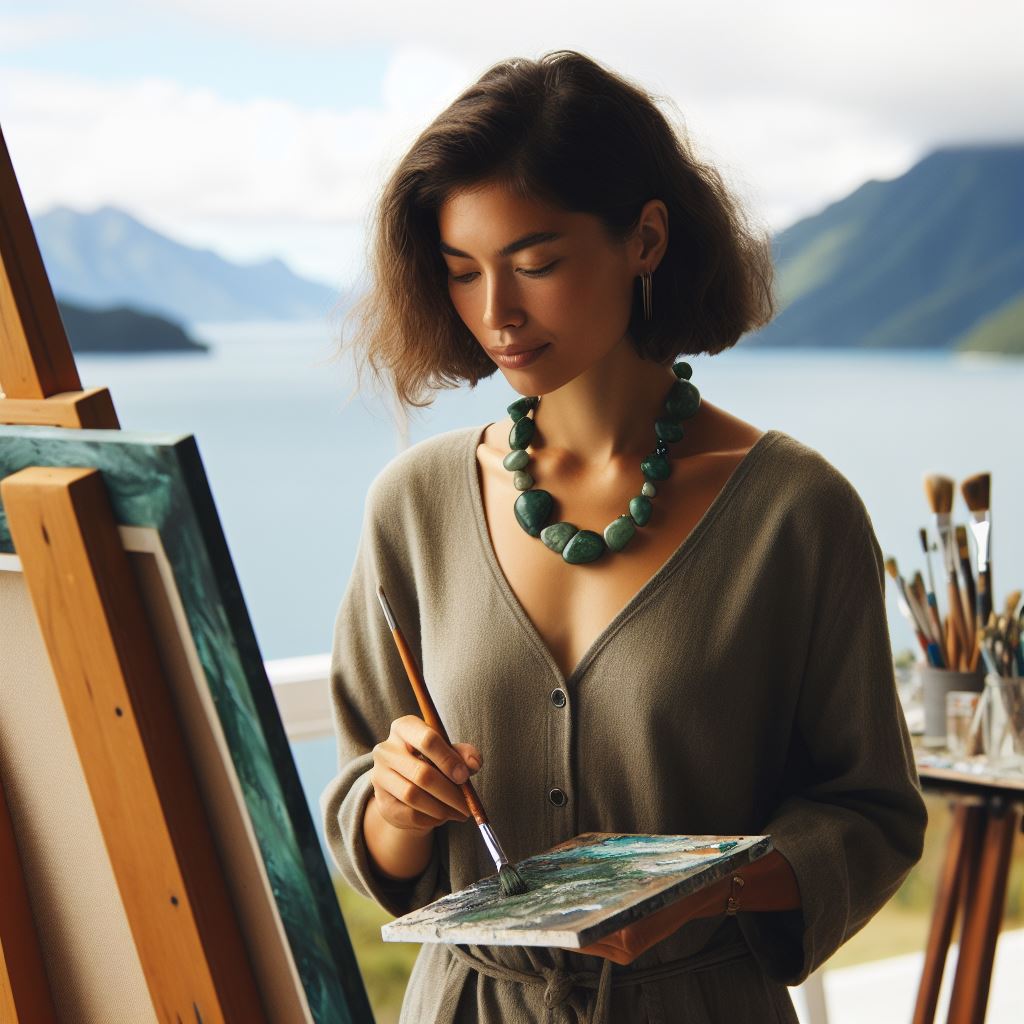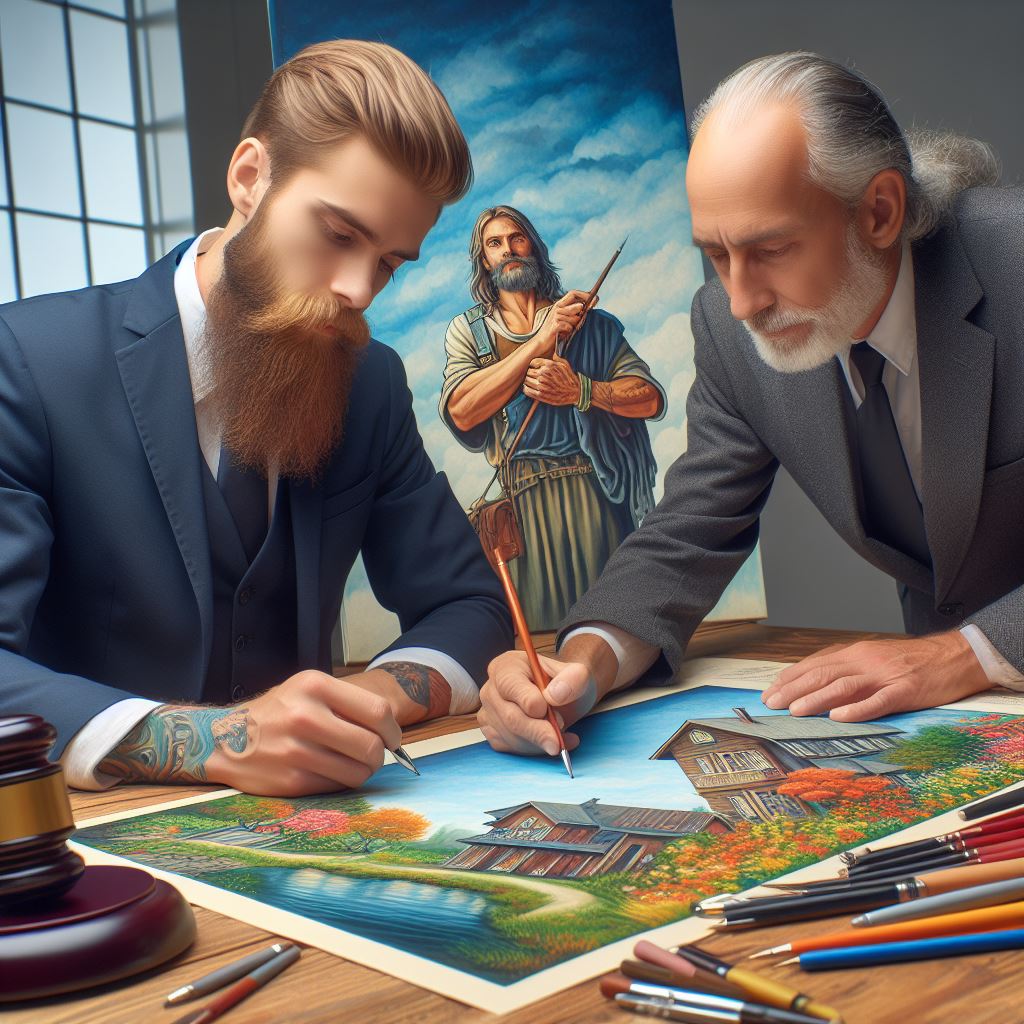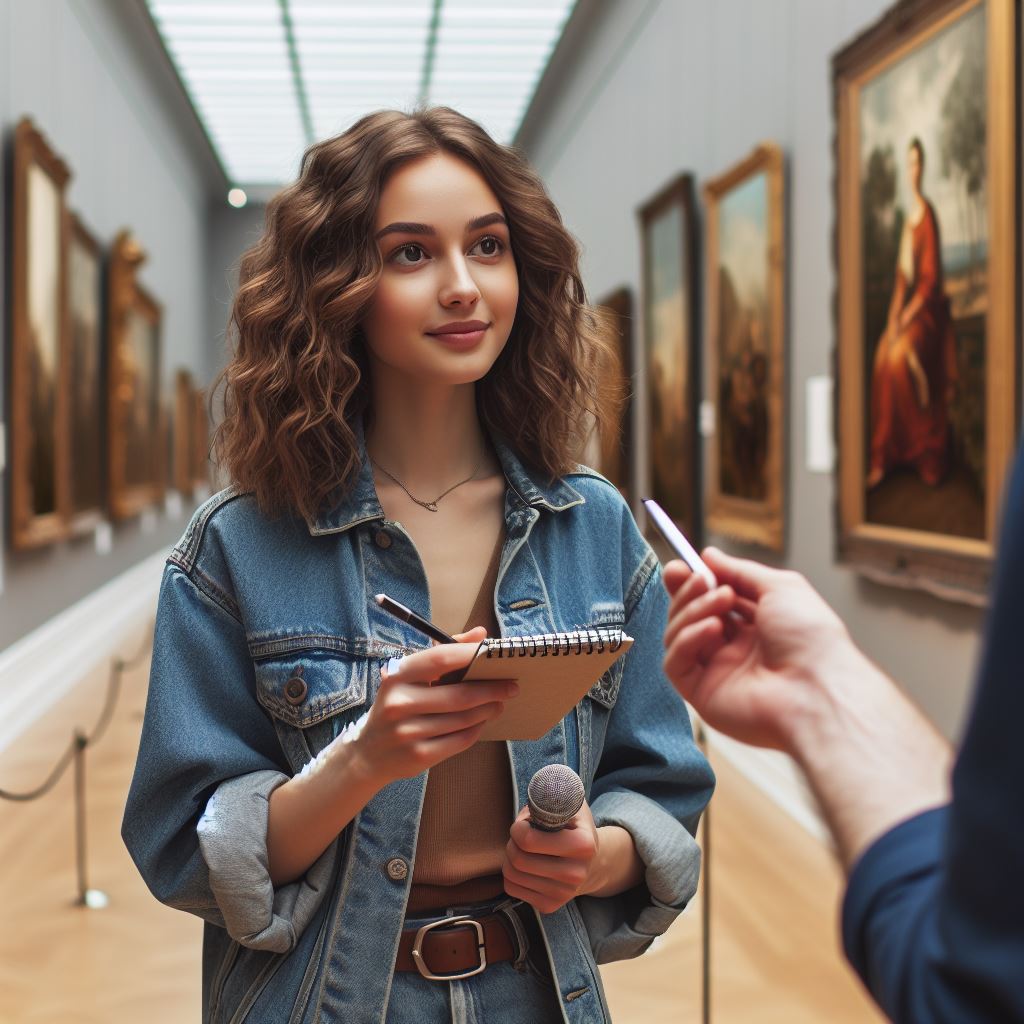Introduction
In recent years, digital art has become increasingly popular, revolutionizing the way artists create and showcase their work.
With the advancements in technology, digital art holds a unique place in the contemporary art world.
This section will explore the digital art scene in New Zealand, highlighting its vibrant and dynamic nature.
Brief explanation of digital art and its growing popularity
Digital art refers to any artwork created using digital technology, such as computers, graphic tablets, and software. As technology continues to evolve, so does the accessibility and versatility of digital art.
Its growing popularity can be attributed to the ease of creation, limitless possibilities, and the ability to reach a wider audience through online platforms.
Overview of the digital art scene in New Zealand
New Zealand boasts a thriving digital art community, with artists pushing the boundaries of creativity and embracing technology as a medium.
The country has seen a significant rise in digital art exhibitions, events, and workshops. The diverse range of styles and approaches highlights the unique perspectives of New Zealand artists.
Notable digital art collectives, such as the Whare Hauora Collective and Digital Artist Diaries, have emerged, providing a platform for artists to collaborate, share resources, and showcase their work.
These collectives organize exhibitions, host artist talks, and foster a sense of community among digital artists in the country.
In addition, institutions such as the New Zealand Digital Arts Festival and the Auckland Art Gallery recognize digital art as a legitimate art form and feature digital artworks in their exhibitions.
This recognition further contributes to the growth and acceptance of digital art in New Zealand.
Overall, the electronic l art scene in New Zealand is flourishing, with artists embracing technology to create innovative and captivating artworks.
As the popularity of electronic art continues to rise, New Zealand remains at the forefront of this dynamic and ever-evolving artistic movement.
Traditional Art vs. Digital Art
- Traditional art relies on physical materials, while digital art is created using digital technology.
- Traditional art techniques include drawing, painting, and sculpting, while digital art uses software and computer tools.
- Traditional art offers a tactile experience, while electronic art provides a seamless and editable process.
- Traditional art involves creating unique and original pieces, whereas electronic art can be easily replicated.
Comparison of Traditional Art and Digital Art Techniques
- Traditional art techniques allow artists to express their creativity directly through physical mediums.
- Digital art techniques provide artists with a wide range of tools and effects to enhance their artwork.
- Traditional art requires mastery of specific techniques, such as brushstrokes and color mixing.
- Digital art allows for experimentation and exploration of various styles without the limitations of physical materials.
Advantages of Digital Art
- Digital art offers greater flexibility and convenience since artists can work digitally anywhere and at any time.
- Digital art provides the ability to easily edit and modify artwork without damaging the original piece.
- Digital art allows for faster creation and production, making it more efficient for commercial projects.
- Digital art offers a wider audience reach through online platforms, social media, and electronic exhibitions.
Disadvantages of Digital Art
- Digital art may lack the tactile experience and physical presence of traditional art.
- The initial investment for electronic art tools, such as software and hardware, can be expensive.
- The overuse of digital effects and filters may result in artworks that lack originality and uniqueness.
- Digital art can be susceptible to software glitches and technical issues that may lead to loss of work.
Digital Art Trends in New Zealand
- Increased accessibility to digital tools and software has contributed to the growth of digital art in New Zealand.
- New Zealand artists have embraced digital art as a means of self-expression and exploring new artistic possibilities.
- Digital art has allowed for the fusion of traditional Maori art forms with modern electronic techniques.
- The use of electronic art in commercial industries, such as advertising and gaming, has seen significant growth in New Zealand.
Emerging Trends in Digital Art in New Zealand
- Augmented reality (AR) and virtual reality (VR) technologies are being integrated into digital art experiences.
- The use of generative art, where algorithms are used to create unique and constantly evolving artwork, is gaining popularity.
- Collaborative electronic art projects are becoming more common, where artists work together remotely to create artworks.
- Digital art is being used as a tool for social and political commentary, addressing issues specific to New Zealand society.
Basically, electronic art has become a prominent and evolving trend in New Zealand. While traditional art retains its unique qualities, electronic art offers new possibilities and advantages for artists.
The accessibility, flexibility, and innovative nature of electronic art have contributed to its increasing popularity in the country.
Influences on Digital Art in New Zealand
When it comes to digital art, New Zealand has a unique set of influences that shape its vibrant and diverse art scene.
Maori Culture and Its Impact on Digital Art
One of the most significant influences on electronic art in New Zealand is the rich and vibrant Maori culture.
The fusion of tradition and electronic technology has created a new wave of art that celebrates Maori heritage in innovative ways.
Artists often draw inspiration from Maori myths, legends, and symbols, incorporating them into their digital creations.
This infusion of Maori culture gives their artwork a distinctive and authentic New Zealand identity.
New Zealand Landscapes and Natural Beauty as Inspirations
The breathtaking landscapes and natural beauty of New Zealand are another major source of inspiration for digital artists.
From the pristine beaches to the snowy mountains, artists find endless inspiration in the country’s diverse scenery.
Many artists choose to depict New Zealand’s landscapes through various digital techniques, bringing out the vibrant colors and textures of the scenery.
This connection to nature creates a sense of place and belonging in their art, reflecting the deep connection that New Zealanders have with their environment.
Use of Vibrant Colors and Patterns in Maori-Inspired Digital Art
Maori-inspired digital art is characterized by its vibrant colors and intricate patterns.
These elements pay homage to Maori traditions and the importance of visual storytelling in their culture.
Artists utilize a wide range of digital techniques to create striking imagery, often using bold colors and intricate patterns to capture the viewer’s attention.
These colorful and visually appealing designs not only reflect the beauty of Maori culture but also resonate with a sense of pride and identity.
Therefore, the influences on digital art in New Zealand are diverse and unique.
The fusion of Maori culture, New Zealand landscapes, and vibrant colors and patterns create a dynamic and vibrant art scene that reflects the country’s rich heritage and natural beauty.
Digital artists in New Zealand continue to push boundaries and explore new ways of incorporating these influences into their work, ensuring that the art scene remains progressive and captivating.
Personalized Career Consulting
Unlock your potential with expert career advice tailored to your goals. Get personalized guidance and actionable steps toward your dream career in New Zealand.
Get StartedRead: NZ Music Festivals: Behind Scenes
New Zealand Digital Artists to Watch
In recent years, the electronic art scene in New Zealand has been flourishing, with talented artists pushing boundaries and creating unique and visually stunning works of art.
In this section, we will introduce you to some of the most prominent digital artists in New Zealand, highlighting their unique styles, techniques, and notable works that have captivated audiences around the world.
Sarah Crossley
Sarah Crossley is a digital artist known for her mesmerizing abstract creations.
Using vibrant colors, intricate patterns, and a touch of surrealism, Crossley’s artworks evoke a sense of wonder and transport viewers to ethereal realms.
Notable Works: “Dreamscapes,” a series of electronic paintings where Crossley explores dreams and the subconscious, and “Cosmic Symphony,” an immersive electronic installation that merges art and technology.
James Reynolds
James Reynolds is a New Zealand digital artist renowned for his innovative 3D sculptures.
With his mastery of digital modeling and rendering techniques, Reynolds brings imaginary creatures and objects to life, blurring the line between the real and virtual worlds.
Notable Works: “The Ascendance,” a monumental 3D sculpture featured in various public spaces, and “Metamorphosis,” an interactive digital installation that allows viewers to shape-shift virtual objects.
Emily Taylor
Emily Taylor’s electronic art revolves around the intersection of nature and technology.
Through her unique blend of organic textures and futuristic elements, Taylor creates visually striking pieces that explore humanity’s relationship with the natural world.
Notable Works: “Bionic Blossoms,” a series of digital illustrations merging flowers and mechanical parts, and “Synthetic Symphony,” an immersive virtual reality experience where participants interact with digitally designed ecosystems.
Max Harper
Max Harper is a New Zealand digital artist recognized for his digital collages that combine vintage imagery with contemporary elements.
Harper’s juxtaposition of old and new creates thought-provoking works that challenge traditional notions of art and time.
Notable Works: “Retro Fusion,” a series of digital collages immortalizing iconic moments from the past in a modern context, and “Temporal Kaleidoscope,” an interactive digital installation that allows viewers to navigate through a fragmented timeline.
Mia Bennett
Mia Bennett is a digital artist whose works revolve around the concept of identity in the digital age.
Through her expressive portraits and distorted figures, Bennett explores the complex relationship between the self and the virtual realm.
Notable Works: “Pixels of the Soul,” a series of digital portraits where Bennett examines the fragmentation of identity in the digital era, and “Lost in the Web,” an augmented reality installation where viewers navigate through a maze of distorted self-representations.
These are just a few examples of the talented electronic artists emerging from New Zealand’s vibrant art scene.
Their unique styles, innovative techniques, and thought-provoking works showcase the immense creativity and diversity of the electronic art landscape in New Zealand.
As technology continues to evolve, we can only anticipate more incredible creations from these artists, pushing the boundaries of electronic art even further.
Read: Maori Music: NZ’s Rich Heritage
Transform Your Career with a Professional CV and Cover Letter
Stand out to employers with an ATS-optimized resume and tailored cover letter designed to match your dream role. Let us craft your job application materials for success!
Get Started
Emerging Digital Art Trends in New Zealand
As technology advances, so does the world of electronic art. In New Zealand, artists are constantly pushing boundaries and exploring new techniques and software to create innovative and captivating pieces.
Let’s take a look at some of the emerging electronic art trends in the country.
Exploration of New Techniques and Software
New Zealand artists are not afraid to experiment with different techniques and software to enhance their digital art.
They are constantly seeking out new tools and methods to push the boundaries of their creativity.
For example, many artists are now exploring the world of generative art, which involves using algorithms and code to create unique and ever-changing electronic pieces.
This allows for a level of complexity and unpredictability that traditional methods cannot replicate.
Additionally, digital painting techniques have evolved, allowing artists to create stunningly realistic and detailed pieces using software such as Adobe Photoshop and Corel Painter.
This has opened up a world of possibilities for artists to explore and experiment with their art.
Rise of Virtual Reality (VR) and Augmented Reality (AR)
Virtual reality and augmented reality have become increasingly popular in the world of electronic art in New Zealand.
Artists are utilizing these technologies to create immersive and interactive experiences for viewers.
Virtual reality allows viewers to enter a completely digital world and experience art in a whole new way.
Artists can create virtual galleries or 3D installations that viewers can explore and interact with.
This adds a new dimension to the art, blurring the line between reality and the digital realm.
Augmented reality, on the other hand, merges the digital and physical worlds.
Artists can create digital overlays that viewers can see through their smartphones or AR devices, bringing the art to life in the real world.
This opens up new possibilities for storytelling and creating interactive experiences.
Incorporation of Traditional Art Elements
While electronic art is inherently technology-driven, New Zealand artists are finding ways to incorporate traditional art elements into their electronic pieces.
This fusion of old and new creates unique and visually striking artworks.
Many artists are combining digital techniques with traditional painting, drawing, and sculpture.
They may start with a traditional medium and then scan or photograph their work to manipulate and enhance it digitally.
This allows them to build upon traditional techniques and create something entirely new.
Others are embracing traditional art forms such as watercolor, oil painting, or printmaking and giving them a electronic twist.
They may use digital tools to add textures or effects to their traditional artworks, giving them a contemporary edge.
The incorporation of traditional art elements in digital pieces provides a sense of familiarity and nostalgia while still pushing the boundaries of what is possible in the digital realm.
In general, New Zealand’s digital art scene is constantly evolving and embracing new trends.
From exploring new techniques and software to utilizing virtual and augmented reality, and incorporating traditional art elements.
Artists in the country are pushing the boundaries of creativity and captivating audiences with their innovative digital artworks.
Read: NZ Bands Making Global Waves
Digital Art Exhibitions and Events in New Zealand
New Zealand has seen a surge in the popularity of electronic art in recent years, with several major exhibitions and events dedicated to showcasing the talent and innovation in this field.
These events play a significant role in promoting and advancing electronic art within the country.
Boost Your Career with a Standout LinkedIn Profile
Attract recruiters and expand your network with a fully optimized LinkedIn profile tailored to highlight your strengths and professional goals. Let your profile open doors to new opportunities!
Get OptimizedOverview of Major Digital Art Exhibitions and Events
- Auckland Digital Art Festival: This annual festival brings together local and international electronic artists to exhibit their works.
It features interactive installations, virtual reality experiences, and live performances. - Wellington Digital Arts Festival: Held biannually, this event showcases a wide range of electronic art forms, including video art, computer animation, and electronic photography.
It also includes panel discussions and workshops. - Christchurch Digital Arts Week: This week-long event promotes interdisciplinary collaboration and explores the intersection of art, technology, and society.
It features exhibitions, talks, and workshops from renowned digital artists.
The Importance of Digital Art Events in Promoting the Field
- Exposure and Recognition: Digital art events provide a platform for emerging and established artists to showcase their work to a wider audience, gaining exposure and recognition for their talent and creativity.
- Networking Opportunities: These events bring together artists, curators, critics, and art enthusiasts, fostering networking opportunities and facilitating collaborations that can lead to new artistic projects and partnerships.
- Education and Inspiration: Digital art events often include workshops, panel discussions, and artist talks, offering valuable educational experiences for both artists and visitors.
They inspire and encourage the exploration of new techniques and technologies. - Cultural Enrichment: These exhibitions and events contribute to the cultural landscape of New Zealand by promoting digital art as a legitimate and valuable art form, thereby enriching the country’s artistic heritage.
- Tourism and Economy Boost: Digital art events attract both local and international visitors, boosting tourism and benefiting the local economy.
They often create opportunities for collaboration between artists and businesses in related industries.
Read: NZ Artists’ Paths: Education to Success
The digital art scene in New Zealand is thriving, thanks in large part to the various exhibitions and events dedicated to showcasing this innovative field.
These events not only provide a platform for artists to showcase their work but also play a crucial role in promoting and advancing digital art within the country.
Through exposure, networking, education, and cultural enrichment, they contribute to the growth and recognition of this dynamic art form while stimulating the local economy and fostering creativity.+
Conclusion
In closing, electronic art in New Zealand is experiencing a dynamic evolution driven by technological advancements and creative innovation.
Artists are exploring new techniques, styles, and mediums to push the boundaries of digital expression.
The growing popularity of electronic platforms and social media has democratized access to electronic art, allowing artists to reach global audiences and connect with fellow creators worldwide.
As electronic art continues to gain traction, it presents exciting opportunities for collaboration, experimentation, and interdisciplinary exploration.
From digital painting and illustration to 3D modeling and virtual reality, the possibilities for creative expression are endless.
New Zealand’s electronic art community is vibrant and diverse, encompassing artists from various backgrounds and disciplines.
The supportive environment and collaborative spirit within the electronic art community foster creativity, inspiration, and mutual learning.
Digital art trends in New Zealand reflect the country’s unique cultural heritage, natural landscapes, and contemporary social issues.
Artists draw inspiration from Maori culture, indigenous traditions, and modern urban landscapes to create compelling and thought-provoking digital artworks.
The accessibility of digital tools and software has empowered artists of all skill levels to experiment and innovate in their creative practice.
As electronic art continues to evolve, it is essential for artists to stay adaptable, open-minded, and responsive to emerging trends and technologies.
Engaging with the electronic art community through exhibitions, workshops, and online forums provides opportunities for networking, collaboration, and skill development.




